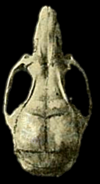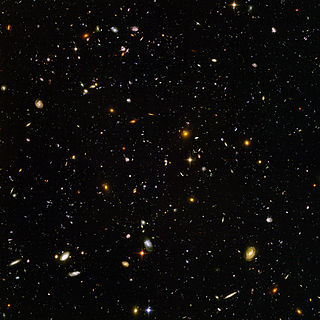From Wikipedia, the free encyclopedia
From today's featured article
|
 Transandinomys bolivaris, also known as the long-whiskered rice rat, is a rodent in the genus Transandinomys. It is found in humid forest from northeastern Honduras to western Ecuador, up to 1800 m (5900 ft) above sea level. Since it was first described in 1901 from Ecuador, six scientific names have been introduced for it, but their common identity was not documented until 1998 and the species had a number of names until it was moved to the new genus Transandinomys in 2006. It is a medium-sized rice rat and has very long vibrissae (whiskers)—those above the eyes are up to 50 mm (2.0 in) long, making it distinguishable from other similarly sized rice rats. The fur, which is soft and dense, is usually dark brown above and light gray below; it is darker in juveniles. The feet are long and the tail is about as long as the head and body. The skull (pictured from above) is narrow and relatively long, and has a broad interorbital region (between the eyes). The species generally lives on the ground, but some young animals have been taken in vegetation, up to 1.5 m (5 ft) above the ground. Although it is rare, its conservation status is thought to be secure. (Full article...)
Part of the Transandinomys series, one of Wikipedia's featured topics.
Recently featured: Fluorine – System Shock – Gustav Holst
|
Did you know...
|
|
|
|
|
In the news
|
|
|
On this day...
|
|
|
|
Today's featured picture
|
 |
The Hubble Ultra-Deep Field (HUDF) is an image of a small region of space in the constellation Fornax, composited from Hubble Space Telescope data accumulated over a period from September 24, 2003, through January 16, 2004, and released in 2004. Covering 2.4 arcminutes to an edge, the area was selected because of the low density of bright stars in the near-field, allowing much better viewing of dimmer, more distant objects. It required 400 orbits and a million seconds (11.6 days) of exposure to obtain sufficient light for producing this image, which contains an estimated 10,000 galaxies.
Image: NASA
|
|
|
Other areas of Wikipedia
- Community portal – Bulletin board, projects, resources and activities covering a wide range of Wikipedia areas.
- Help desk – Ask questions about using Wikipedia.
- Local embassy – For Wikipedia-related communication in languages other than English.
- Reference desk – Serving as virtual librarians, Wikipedia volunteers tackle your questions on a wide range of subjects.
- Site news – Announcements, updates, articles and press releases on Wikipedia and the Wikimedia Foundation.
- Village pump – For discussions about Wikipedia itself, including areas for technical issues and policies.
Wikipedia's sister projects
Wikipedia is hosted by the Wikimedia Foundation, a non-profit organization that also hosts a range of other projects:
Wikipedia languages
This Wikipedia is written in English. Started in 2001 (2001), it currently contains 4,609,087 articles. Many other Wikipedias are available; some of the largest are listed below.
- More than 1,000,000 articles:
- More than 400,000 articles:
- More than 200,000 articles:
- More than 50,000 articles:







